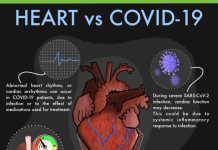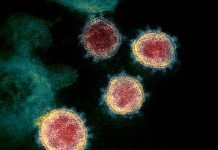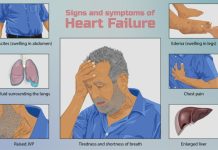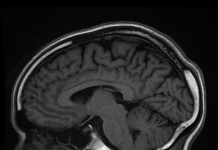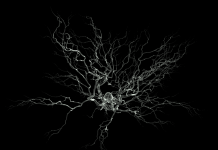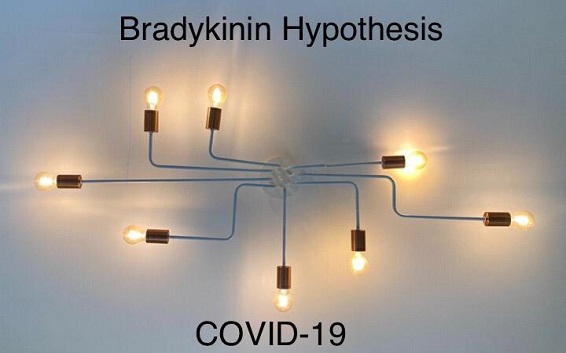A novel mechanism to explain the different unrelated symptoms of COVID-19 has come to light by exploiting the second fastest Supercomputer in the world known as Summit supercomputer at Oak Ridge National Lab in Tennessee. The study involved analysing 2.5 billion genetic combinations from 17000 genetic samples and more than 40,000 genes in order to better understand the catastrophic act that COVID-19 exerts on human body. It took almost a week to analyse these genetic combinations and researchers came up with a new theory called the bradykinin hypothesis1, that not only explains some of the most bizarre and varied symptoms of COVID-19 but also suggests potential treatments, many of them are already approved by FDA.
The SARS-CoV-2 virus that causes COVID-19 generally enters the body by binding to ACE2 receptors (present in abundance in the cells of the nose). It then goes on to infect the other organs of the body such as intestine, kidney and heart where ACE2 receptors are present.
The analyses found that SARS-CoV-2 caused increase in ACE2 levels while decreasing the levels of ACE in the lung cells2. The normal function of ACE2 in the human body is to lower blood pressure and works against another enzyme known as ACE (which has the opposite effect). Therefore, the body has to balance the levels of ACE and ACE2 to maintain a normal blood pressure. The increase in ACE2 levels and decrease in ACE caused an increase in the levels of a molecule known as bradykinin in the cells (referred to as a ‘Bradykinin Storm’). Bradykinin has been shown to induce pain and causes blood vessels to expand and become leaky which can lead to swelling and inflammation of the surrounding tissue.
Bradykinin mis-regulation is controlled by a larger system called Renin Angiotensin System (RAS) that controls many aspects of the circulatory system and includes enzymes ACE2 and ACE. The SARS-CoV-2 virus upon infection tricks the body’s cells to increase ACE receptors thereby increasing ACE2 and infection of more cells. Bradykinin receptors are also re-sensitized, and the body also stops effectively breaking down bradykinin due to decrease in ACE as mentioned above. ACE is normally required for degrading bradykinin.
In addition to bradykinin storm, the computer analyses also found that production hyaluronic acid increased and the enzymes that degrade it decreased significantly. This causes steep rise in hyaluronic acid which absorbs water to form a hydrogel3. The leakage of fluid into lungs caused by bradykinin storm coupled with excess hyaluronic acid results preventing optimal oxygen uptake and carbon dioxide release in the lungs of severely affected COVID-19 patients. This explains why the ventilators have been proven to be ineffective in such patients as no matter what the level of oxygen you provide, the lungs are unable to consume it due to the presence of hydrogel in lungs leading to ultimately suffocation and death in patients.
The bradykinin hypothesis may also explain the cardiovascular and neurological effects seen in COVID-19 patients. Bradykinin storms could lead to arrhythmias and low blood pressure, which are often seen in Covid-19 patients. Increased bradykinin levels can also lead to breakdown of blood-brain barrier causing inflammation and brain damage.
Certain class of compounds known as ACE inhibitors have a similar effect on the RAS system as COVID-19, by increasing bradykinin levels. It seems that SARS-CoV-2 acts in a similar manner to ACE inhibitors. The two classical symptoms of Covid-19, dry cough and fatigue are also caused by ACE inhibitors. In addition, ACE inhibitors also cause a loss of taste and smell, also seen in COVID-19 patients.
If the bardykinin hypothesis is to be believed, then there are already FDA approved drugs available that can lower bradykinin levels and therefore provide relief from COVID-19. These drugs include danazol, stanozolol, and ecallantide, that can reduce bradykinin production and could potentially stop the bradykinin storm. The study also points to the use of Vitamin D as a drug because it is involved in the RAS system as it reduces levels of a compound, known as REN. This could stop the deadly bradykinin storms. Vitamin D has already been implicated in COVID-19 as described earlier4 where insufficient Vitamin D causes severe COVID-19 symptoms. Other drugs that can be exploited are the ones that reduce hyaluronic acid levels, e.g. Hymecromone that can be used to stop hydrogels from forming in the lungs.
Although this study describes the hypothesis that explains nearly all of the COVID-19 symptoms so far and provides a unified theory that can be tested using the available drugs, the real proof of the pudding will come from testing the available drugs alone or in combination in well-designed clinical trials to come up with a treatment regimen that would lead to a possible cure for COVID-19.
***
References
- Garvin MR, Alvarez C, Miller JI, Prates ET, Walker AM et al. A mechanistic model and therapeutic interventions for COVID-19 involving a RAS-mediated bradykinin storm. eLife 2020;9: e59177 DOI: https://doi.org/10.7554/ELIFE.59177
- Zhou P, Yang XL, Wang XG, Hu B, Zhang L, Zhang W et al. A pneumonia outbreak associated with a new coronavirus of probable bat origin. Nature 2020. 579:270–273. DOI: https://doi.org/10.1038/S41586-020-2012-7
- Necas J, Bartosikova L, Brauner P, Kolar J. Hyaluronic acid (hyaluronan): a review. Veterinární Medicína (2008). 53:397–411. DOI: https://doi.org/10.17221/1930-VETMED
- Soni R., 2020. Vitamin D Insufficiency (VDI) Leads to Severe COVID-19 Symptoms. Scientific European. Available online at https://www.scientificeuropean.co.uk/covid-19/vitamin-d-insufficiency-vdi-leads-to-severe-covid-19-symptoms/ Accessed on 4th September 2020.
***






